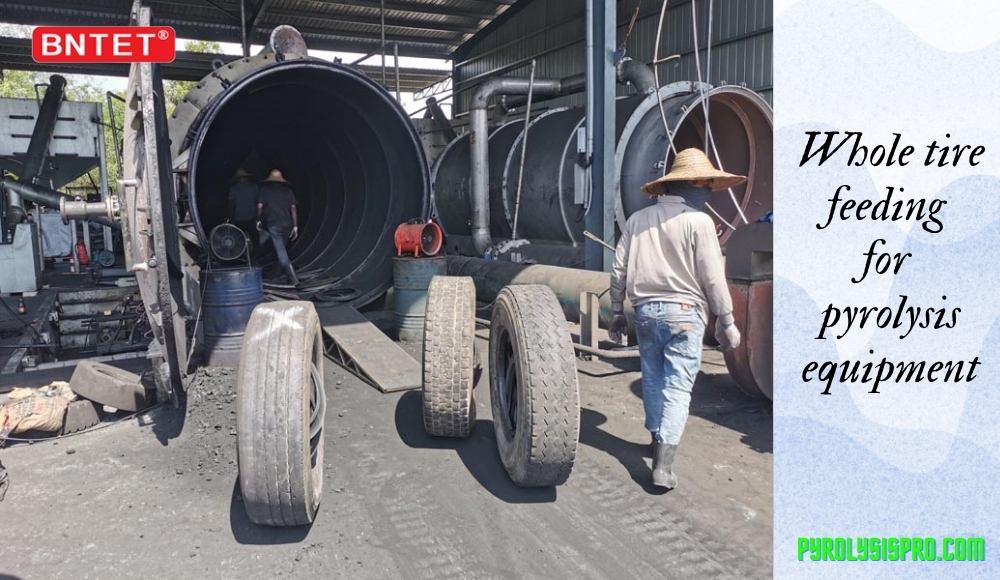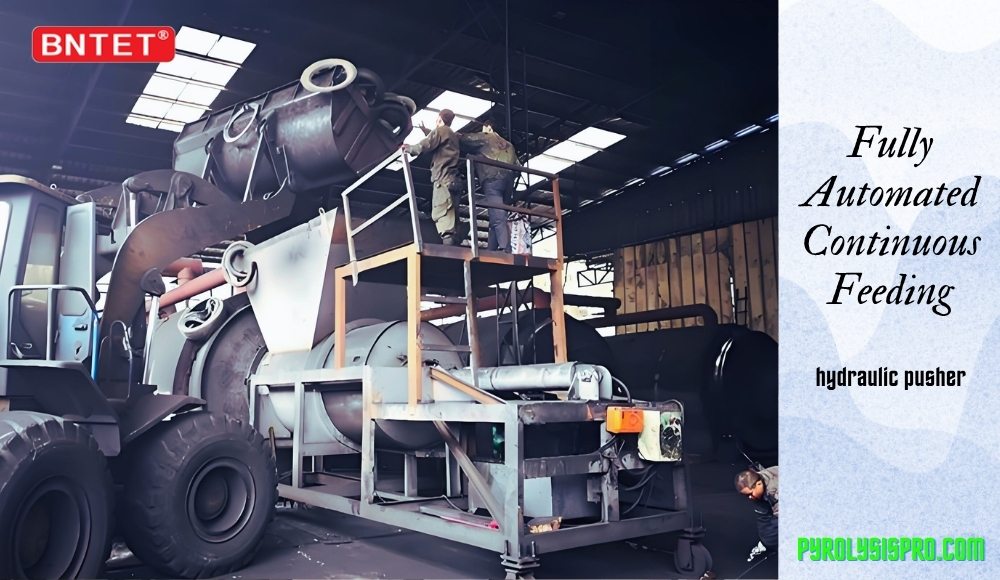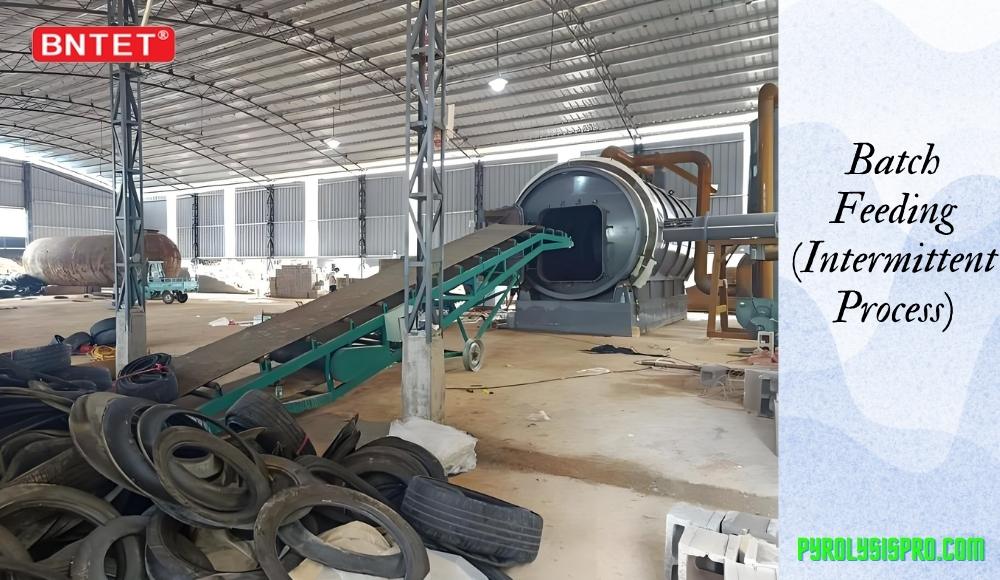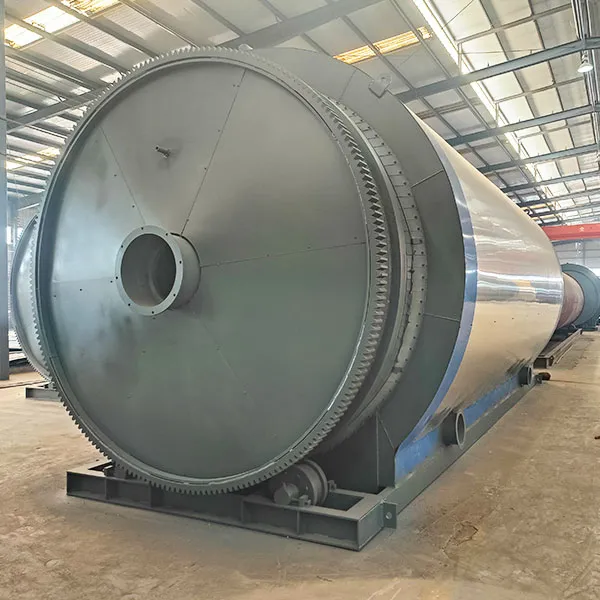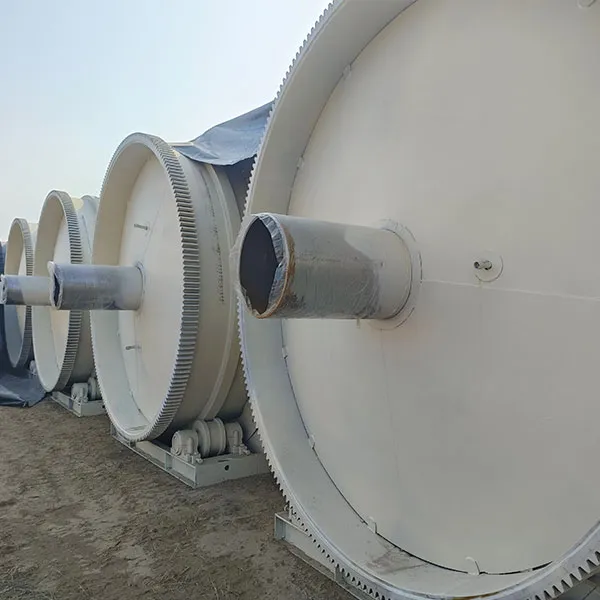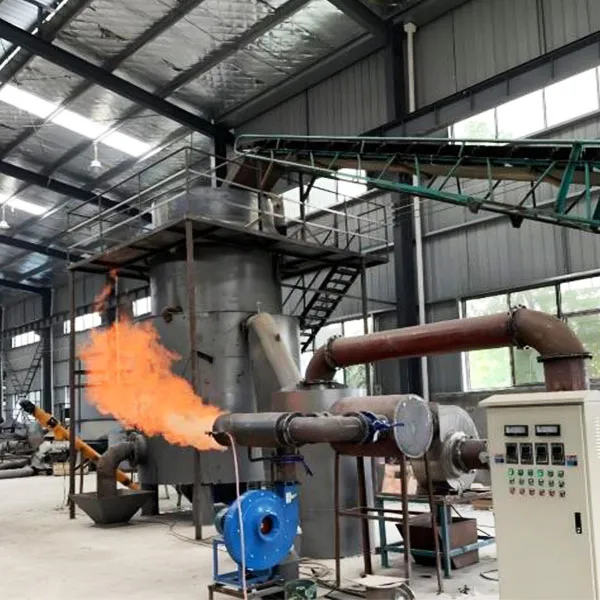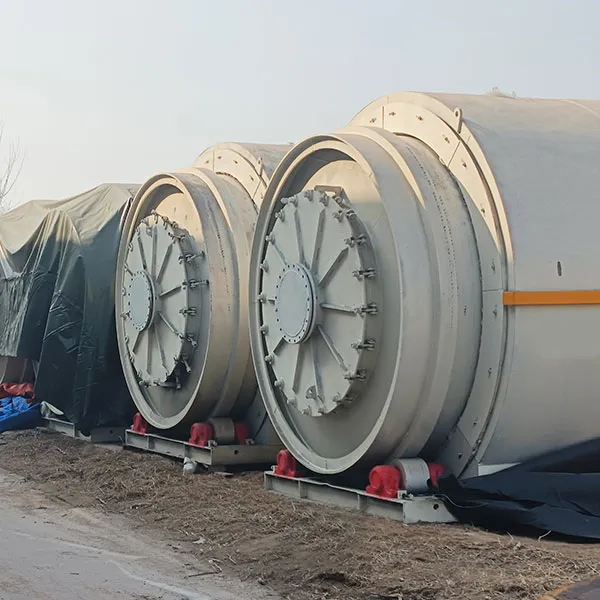Common Feeding Methods for Tire Pyrolysis Equipment
2025-06-17 13:57:44
The feeding method is a critical factor affecting the production efficiency, safety, and continuous operation of tire pyrolysis equipment. Below are several common feeding methods and their characteristics:
1. Whole Tire Feeding
Method: Directly feed entire tires (car tires, truck tires, etc.) into the pyrolysis reactor without pre-processing.
Advantages:
Saves pre-treatment costs (e.g., shredding or cutting).
Suitable for small to medium-sized tires or low-capacity systems.
Disadvantages:
Occupies more reactor space, leading to lower heat transfer efficiency and longer pyrolysis time.
Steel wires or fibers may cause equipment wear or clogging.
Application: Small-scale batch pyrolysis systems.
2. Shredded Tire Feeding
Method: Tires are first shredded into small pieces (typically 3-5 cm) and then fed into the reactor via a conveyor or screw feeder.
Advantages:
Improves pyrolysis efficiency (larger surface area for heat transfer).
Reduces damage from steel wires/fibers.
Suitable for continuous pyrolysis processes.
Disadvantages:
Requires additional shredding equipment, increasing investment and energy consumption.
Application: Medium to large-scale continuous pyrolysis plants.
3. Steel Wire-Removed Feeding
Method: Tires undergo steel wire separation (bead and carcass wires removed) before the remaining rubber blocks are fed into the reactor.
Advantages:
Significantly reduces metal content in pyrolysis residues.
Lowers coking risk in the reactor, extending equipment lifespan.
Disadvantages:
Complex pre-treatment process, higher costs.
Application: Projects requiring high-purity pyrolysis oil/carbon black.
4. Fully Automated Continuous Feeding
Method: Uses a sealed feeding system (e.g., twin-screw feeder, hydraulic pusher) to continuously feed shredded tire particles while preventing oxygen ingress.
Advantages:
Enables 24/7 continuous production with high efficiency.
Ensures safety by avoiding air mixing (explosion risk).
Disadvantages:
Complex equipment with high maintenance requirements.
Application: Large-scale industrial pyrolysis projects.
5. Batch Feeding (Intermittent Process)
Method: Tires (whole or shredded) are loaded manually or mechanically in batches, with residue cleared after each cycle.
Advantages:
Simple equipment structure, low investment.
Disadvantages:
Low production efficiency, high energy consumption.
Manual operation may pose safety risks.
Application: Experimental or small-scale production.
6. Hot Melt Feeding (Special Process)
Method: Tire particles are melted into a rubber slurry at high temperatures and then pumped into the pyrolysis reactor.
Advantages:
Enhances heat transfer uniformity for more complete pyrolysis.
Disadvantages:
Extremely high energy consumption, technically challenging.
Application: Rarely used, limited to high-end processes.
Selection Guidelines
Throughput: Continuous feeding suits large-scale production; batch feeding fits small-scale operations.
Tire Type: Truck tires should be shredded + steel-removed; car tires may allow whole-tire feeding.
Safety: Prioritize sealed feeding systems (e.g., twin-screw) to prevent oxygen entry.
Product Quality: More pre-processing (e.g., wire removal) improves pyrolysis oil and carbon black quality.
In practice, a combination of methods (e.g., "shredding + steel removal + continuous feeding") is often used to balance efficiency and cost.


